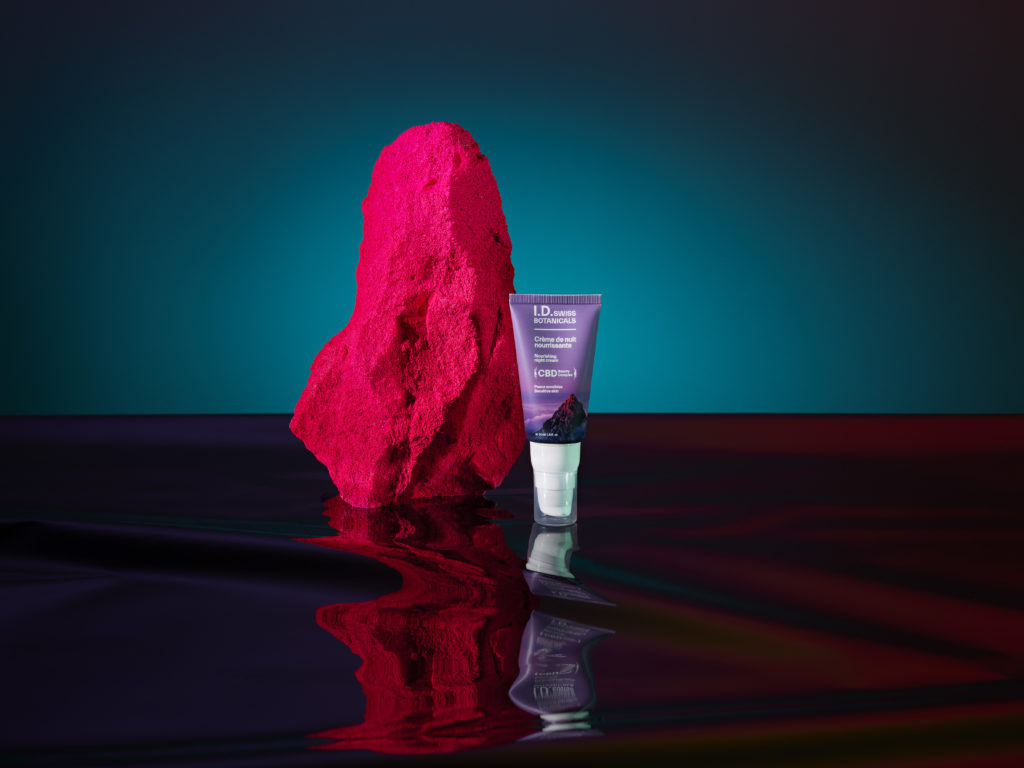- March 2022
Neuro-What ?
neurocosmetics explained
Your skin –
a second brain in the spotlight?
Did you know that the brain and skin have the same embryonic origin?
Skin and brain form at the same time on day 21 of the embryo, with the outermost part of the embryo – the ectoblast – giving rise to the nervous system and the epidermis.
Your skin is therefore a sort of extension of the brain. Its nerve architecture is extremely complex, with no less than 800,000 neurons, 11 metres of nerves and around 200 sensory receptors per cm3. The expression “having nerves on edge” is not overused.
This connection makes it impossible to dissociate the psychic realities that each of us undergoes on a daily basis from the physical ones concerning our skin.
And if your brain communicates with your skin, what happens the other way around? Does your skin send signals or messages of sensation or emotion to your brain, which your brain interprets before reacting or acting? The answer is simply yes.
It sounds logical, doesn’t it? We said “logical”, not “magical”, although quite honestly we are touching on something fundamental here,
The studies around this dual brain/skin and skin/brain communication aim to explore the notion that, on the one hand, your mental state has a direct impact on the health and appearance of your skin, and on the other hand, you can positively influence your mental state or emotions through the topical application of creams, oils or serums. The field of neurocosmetics is undoubtedly one of the most exciting and high-potential fields in the world of beauty today, as it aims to understand, explain and publicise all the “inner & outer” interactions and connections that characterise us on a daily basis and which have an impact on the state of our skin: mental state, emotions, stress, etc., but also our environment, the air, the water and the air quality. These last two years have shown us how fragile the balance is and how essential the need for mental anchoring is. Without a holistic approach, the goal seems unattainable. Neurocosmetics can/should play a part in this, and a brand like I.D. Swiss Botanicals has decided to make this its focus.

Neurocosmetics –
a revolution in the age of time
Neurocosmetics has been the subject of much debate in recent years. Marketers and product experts in the cosmetics industry have tried to adapt semantics to their fields of application and to meet their needs.
Today, the most common use of the term is in relation to “mood lifting” cosmetics. Indeed, a well-balanced perfume or an appropriate and well applied make-up can have a positive effect on a person’s mood. Skin care products can also provide a “well-being” result, thanks to their texture, touch, immediate visual effect, interesting olfactory notes (possibly referring to childhood) or their long-term effectiveness. However, this overall result is primarily psychological and less physiological. And it is this last point that really characterises neurocosmetics, as described by Prof. Laurent Misery* in 2000: products “applied to the skin, presenting an activity on the cutaneous nervous system or [having] general effects on the cutaneous mediators”, thus incorporating biochemical aspects.
This brings us to the heart of the matter: activity triggered by topical application, involving the peripheral cutaneous nervous system, in a safe manner, and/or acting indirectly on local mediators and neurotransmitters. Or in other words, an ability of the skin to communicate with the brain.
The two-way communication between the skin and the brain hides neglected pathways of skin care, as it makes sense that the right emotional balance induced by cosmetics can have a direct impact on the overall health and quality of the skin, as well as on the fight against skin ageing.
And this is the raison d’être of technical brands such as I.D. Swiss Botanicals: to explore without limits, thanks to a scientific team, research as well as unique and innovative formulas, this connection as well as the ability to positively influence the mental state of an individual by communicating through their entire neurological network with topical applications of cosmetic products, such as oils, creams or serums.
* Prof. Laurent Misery, Head of the Department of Dermatology at the University Hospital of Brest (France)
Logic? Magic?
You choose.

CBD – the new hero ingredient in neurocosmetics?

Although the neuroactive properties of plants have been known to humans for centuries, even millennia, the actual scientific links have only recently been studied and deciphered. One of the emerging areas of neurocosmetic science is the study and understanding of the endocannabinoid system.
The endocannabinoid system is above all an important modulation network of the brain through receptors located in the central nervous system as well as in the various peripheral systems. Discovered in the 1990s, it regulates brain homeostasis throughout development, from brain plasticity to learning, memory, fear or protective behaviour. It is a major player in the regulation of food intake, energy storage, nutritional status and adipose tissue mass, affecting for example obesity. The loss of control of the endocannabinoid system has, for example, repercussions on mood disorders (anxiety, hyperactivity, psychosis and depression). A vast subject, therefore.
What is new here, and particularly exciting, is the recent understanding of the existence of cutaneous endocannabinoid receptors, which opens the way to a limitless field of possibilities in neurocosmetics.
But what is the link between neurocosmetics and the endocannabinoid system?
What is new here, and particularly exciting, is the recent understanding of the existence of cutaneous endocannabinoid receptors, which opens the way to a limitless field of possibilities in neurocosmetics.
CBD. It is today the most studied non-psychotropic phytocannabinoid. Very fashionable for some, it has become a subject of research and development for some scientifically active cosmetic brands.
In addition to its many known advantages (antioxidant, anti-inflammatory, repairing, etc.), or lesser-known advantages such as regulation of the microbiome, reorganisation of collagen fibres or very strong stimulation of cell growth, this ingredient provides access to numerous receptors, channels and cellular transporters, in particular those of the endocannabinoid system. It is therefore one of the candidates of choice in the development of neurocosmetics and skin-brain-skin interaction.